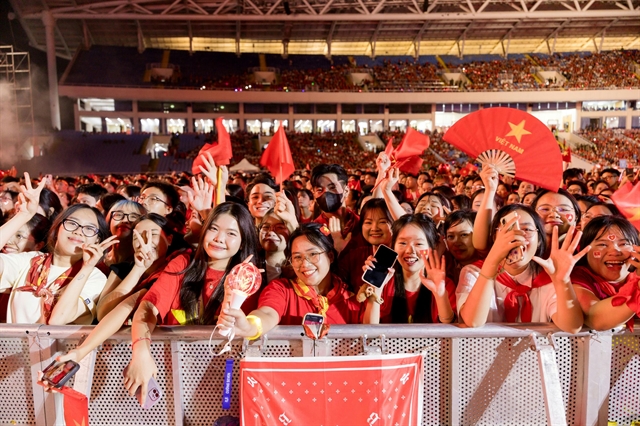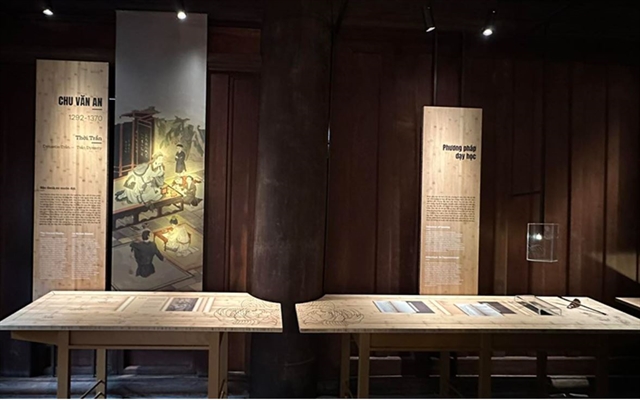 Life & Style
Life & Style


|
| Documents about King Lý Thánh Tông (1023-1072), who valued talent, have great contribution to national education history. — Photos bvhttdl.gov.vn |
HÀ NỘI — A special display featuring the national education history during the royal period is opening at the Văn Miếu Quốc Tử Giám (Temple of Literature) in the centre of Hà Nội.
The permanent exhibition themed Khơi Nguồn Đạo Học (Initial Sources of Education) highlights the outstanding contributions of prestigious people in the "historical flow" of Vietnamese education.
It includes more than 300 documents and artefacts with contents showcased in four parts to feature and recreate life of honourable people including kings and scholars, such as kings Lý Thánh Tông (1023-1072), Lý Nhân Tông (1066 - 1128) and Lê Thánh Tông (1442 - 1497), Scholar Chu Văn An (1292-1370) and other influential people such as Queen Mother Ỷ Lan, and academics Lê Văn Thịnh, Thân Nhân Trung and Lương Thế Vinh.
Speaking at the opening ceremony held early this month by the event organiser Văn Miếu Quốc Tử Giám Cultural and Scientific Centre (VCSC), Đỗ Đình Hồng, Director of Hà Nội Department of Culture and Sports, said: "Through the displayed documents and artefacts, a heritage space will be created serving well the needs of visitors to learn about the contributions of academic luminaries to education and fostering talents, and their lessons are still valuable in today's social life."

|
| Artefacts and documents about Chu Văn An, the famous scholar in Vietnamese education. |
Lê Xuân Kiêu, Director of the VCSC said the exhibition was carried out by officials and staff of the centre with the help of Vietnamese scientists and experts from France.
"We tell the stories of three kings, a queen, a scholar teacher and doctorates. They all have virtue and high intellect, sharing the same vision of school and education – factors that enable us to move towards a more peaceful, prosperous and equitable society," Kiêu said.
The exhibition also helps the public better understand the history and development of Văn Miếu Quốc Tử Giám, the first national university, as well as the ancient Vietnamese education and examination system during the royal period.
Amélie, a representative for Beau Design, the foreign unit which carried out the Khơi Nguồn Đạo Học project, said that the display content aims to honour five famous people who strived to turn education into a core foundation of the Đại Việt nation.
The content is associated with the history of Văn Miếu Quốc Tử Giám. It is also a continuation of the exhibition space themed "Quốc Tử Giám - The First National University" to further spread the values of the relic site, and honours its status as the first national school in the royal period, according to Amélie.
Amélie also said the display gathered maximum historical data and arranged the spaces to convey the values of intellect and memory.

|
| A view of one of the displays. |
With a contemporary, formal and sustainable style of expression, the design focuses on the theme of education through artefacts and associated values that attract visitors, especially young people, through interactive forms of expression, she added.
The colours used for the display are reminiscent of past dynasties while artefacts such as the students' desks or desks in the kings' study rooms are arranged to spread the image of famous people's efforts and spirit of learning during the royal era.
The exhibition content also aims to present famous people not as monarchs but as exemplary role models, according to Amélie. VNS




